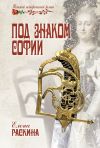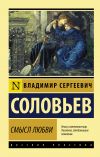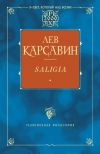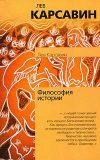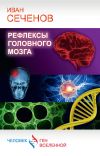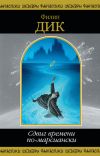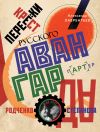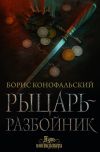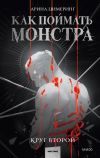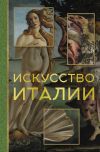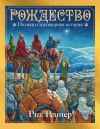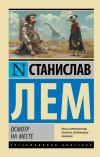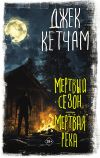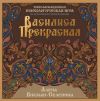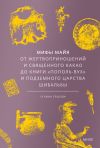Текст книги "Софиология"
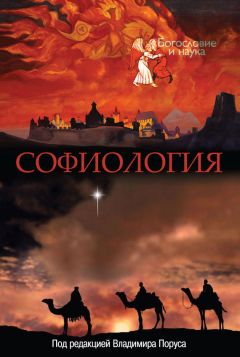
Автор книги: Сборник статей
Жанр: Религиоведение, Религия
Возрастные ограничения: +12
сообщить о неприемлемом содержимом
Текущая страница: 5 (всего у книги 20 страниц) [доступный отрывок для чтения: 5 страниц]
В-третьих, софийная метафизика – синтетическая система знаний. Этот принцип логически дополняет первые два. Конкретная живая действительность не вмещается в границы рационального, а потому знание о ней может иметь только синтетический характер. В центре метафизики должны находиться внутренние отношения всех сфер бытия, приводящие их к высшему единству. С помощью понятия Софии
B.C. Соловьев, П.А. Флоренский и С.Н. Булгаков пытались отразить непрерывную иерархию сущностей от Бога до человека и тем самым ликвидировать кажущийся онтологический разрыв между ними.
В-четвертых, софийная метафизика должна отражать двуплановость бытия: его тварный и небесный аспект. Но несмотря на то что все софиологи строили свои метафизические системы на дуалистическом основании, их взгляды имели существенные различия. Так, например, если мысль П.А. Флоренского двигалась от тварного к вершинам Божественного, то С.Н. Булгаков, наоборот, шел от Божественного бытия к тварному, дедуцируя от высшего принципа к конкретным воплощениям.
В-пятых, софийная метафизика должна раскрывать и показывать истины православия. Например, B.C. Соловьев ни в одной из работ не отказывался oт идейной приверженности православию, но при этом был ориентирован на внецерковный синтез, выходящий за конфессиональные пределы. Иначе обстоит дело в творчестве П.А. Флоренского и С.Н. Булгакова, которые стремились включить в метафизику религиозные созерцания и озарения, связанные с жизнью в православии. С.Н. Булгаков выразил это в творческой мечте: «Осознать себя со своей исторической плотью в Православии и чрез Православие, постигнуть его вековечную истину чрез призму современности, а эту последнюю увидеть в его свете – такова жгучая, неустранимая потребность, которая ощутилась явно с XIX века, и чем дальше, тем становится острее»[108]108
Булгаков С.Н. Свет невечерний: Созерцания и умозрения. М., 1994. С. 3.
[Закрыть]. Метафизика софиологов не стала православной онтологией, но ее категориальный аппарат был включен в неортодоксальное богословие и русскую религиозную философию.
В-шестых, софийная метафизика возможна в контексте всеединства. Всеединство – это философская категория, которая отражает принцип совершенного единства множества, при котором элементы сохраняют себя, но пребывают в нерасторжимой связи между собой и всеобщим началом. Постичь всеединство рационально нельзя, так как логическим путем оно не выводимо. Метафизика всеединства у софиологов построена на интуиции, не-рациональном основании.
B.C. Соловьев отождествлял принцип всеединства с принципом целостности, утверждающим, что каждый предмет есть лишь выделившаяся часть целого, включающего бытие других явлений, предметов, процессов, с которыми он связан и взаимодействует. При этом отметим, что лишь у В.С. Соловьева метафизика была разработана терминологически («Всеединое сущее», «отрицательное (отвлеченное) всеединство», «положительное (конкретное) всеединство» и т. д.). П.А. Флоренский в своих работах выдерживал дух всеединства, но избегал самого термина. По-видимому, это объясняется его критическим отношением к наследию Соловьева по данному вопросу. С.Н. Булгаков также отдельно не разрабатывал категорию всеединства, она присутствовала в его работах имплицитно – через идею Христа как «Всечеловека», «Личности всех личностей». Всеединство в философии С.Н. Булгакова преломляется через религиозные убеждения и выражается как всеединство христианское. Возможно, что С.Н. Булгаков и П.А. Флоренский с высоты своего священнического сана многое не принимали в софиологии Соловьева, а потому не пожелали углублять его трактовку всеединства, восприняв только основополагающие характеристики для развития христианской онтологии.
Обобщая, можно сказать, что софийное мышление – это особый тип идеалистического мировоззрения, основывающийся на мифологических допущениях, мистических интуициях, мистическом опыте, сопряженном с обликом Софии, и рационализация этих допущений, позволяющих особым образом структурировать бытие.
С помощью понятия Софии B.C. Соловьев, П.А. Флоренский и С.Н. Булгаков, каждый по-своему, пытались отразить непрерывную иерархию сущностей от Бога до человека и тем самым ликвидировать кажущийся онтологический разрыв между ними. С этой точки зрения метафизика действительно обретала новые измерения. Она стала возможна и как метафизика тварного, и как метафизика духовного, позволила показать единство и различие в существовании и долженствовании. Действительность как область существования в проекции софийного мышления стала рассматриваться через противополагание мира истинного миру должного, соотносимого с Софией. Ведь София как философема определяет высшую планку бытия – его первообраз, идеальное содержание мира и человека. София имеет явно выраженную онтологическую направленность, так как, выступая в качестве нетварного начала тварности, она служит больше целям миропознания, чем Богопознания. И в этом проявляется еще одна типологическая характеристика софийного мышления. Иными словами, София является организующей силой единства раздробленного мира, удерживающей его от погружения в хаос.
Рассуждая о типологических характеристиках софийного мышления, мы вовсе не стремимся завуалировать те существенные различия, которые имели место в софиологии B.C. Соловьева, П.А. Флоренского, С.Н. Булгакова. Так, например, важнейший вопрос – отношения между Богом и человеком, идеальным миром и феноменальным – рассматривается у названных философов под разным углом зрения. Если B.C. Соловьев делал акцент на причине отпадения миров, то С.Н. Булгаков главным считал вопрос об отношении между мирами в целом, и особенно в аспекте единства Бога со всем сотворенным. А в центре метафизики П.А. Флоренского находилась символическая реальность, подтверждающая факт абсолютной неотделимости духовного от чувственного, ноумена от феномена. Но несмотря на конкретные различия во взглядах на проблему взаимоотношения идеального мира и феноменального, русские софиологи пытались открыть тe стороны бытия, которые более всего указывали на его идеальное основание – Софию. Сквозь разногласия русских софиологов все же видна общая направленность их мыслей и тот тип мышления, который можно охарактеризовать как софийный.
Софийное мышление, как показало творчество B.C. Соловьева, П.А. Флоренского и С.Н. Булгакова, выражается в единстве постановки мировоззренческих и исследовательских задач, выборе средств их решения и полученных выводов. Оно позволяет преодолевать фрагментарное восприятие мира через ограниченность географических, конфессиональных, исторических, культурных и иных границ. Софийное мышление, по сути, есть синкретический тип мышления, для которого свойственно допущение единства рационального, иррационального и сверхрационального. В этом смысле софийное мышление, сущностные черты которого раскрываются через творчество, прежде всего B.C. Соловьева, П.А. Флоренского, С.Н. Булгакова, обладает еще не полностью раскрытым потенциалом формирования картины мира, отражающей единство мироздания в его все усложняющемся многообразии.
Катарина Брекнер
Sophiology in Vladimir Solov’ëv and in Sergej Bulgakov. A Comparative AnalysisBeginning with the impossible".describes the dynamics of religious life and thought, a life and a thinking that is fired by faith that is driven by a messianic hope for something impossible, something always to come. The impossible is what is absolutely unforeseeable, what surprises us or shatters our horizon of expectation."[109]109
Cf. Caputo, J., Philosophy and Prophetic Postmodernism: Towards a Catholic Postmodernity, Lecture on the International Congress «Philosophical Reason and Christianity at the threshold of the 3rd Millenium,» World Conference of Catholic University, Paris (Unesco) 24. 3. 2000, 12.
[Закрыть]
Explaining the possibility of the impossible has been Vladimir Solov’ëv′s theosophical program: man is, as he claimed, by no means an end in itself but God called him to unite the Created with the Creator. Solov’ëv firmly believed that Creation is incomplete. Especially the fifth book of Istoriia i buduchshnost′ teokratii, 1885–1887[110]110
Cf. Solovyov (Solov′ev], S. Vladimir: His life and Creative Evolution, E. Gibson (transl), 2 vols., Virginia: Eastern Christian Publications, 2000, 216–228, on biographical and bibliographical details concerning the development of this unfinished work.
[Закрыть], unambiguously declares Creation as awaiting man′s conscious reunification with God.
The confidence in Creation continued by mankind is what held together "Silver Age" thought as it developed in Solov’ëv′s wake. Especially Bulgakov shared the belief that Creation is incomplete and that bogochelovechestvo (humanity following the example of the second Adam Jesus Christ) must arrive at organizing social life according to man′s God-like creativity and hence fulfill Creation until the «eighth day»[111]111
The idea of an «eighth day» to Creation was already propounded by St. Augustine. Cf. Augustine, The City of God against the Pagans, Cambridge UP, 1998, 1182.
[Закрыть] dawns. Although the idea of an «eighth day» cannot be found in the writings of Solov’ëv or Bulgakov, it organizes, as this essay argues, their thought about Creation and Godman′s co-Creative task.
Vladimir Solov’ëv prophesied the Universal Church, the embodiment of "Sophia," as to be established on this eschatological "eighth day" whereas Bulgakov envisioned a particular type of ′sophianic materialism′ (my expression, KB) that unambiguously defined the Church to promote godman′s co-Creativity
Both St. Athanasius, the generally acknowledged Father of the Orthodox Church, and St. Augustine had a fully explicit sophiology at the heart of their vision. Both see Sophia as the final embodiment of the glorification of human nature in Christ, in His mystical body the Church. This view of Sophia is in agreement with the content of the great Biblical texts of Proverbs 8, 9, Ecclesiastes 24, and The Song of Solomon 7, which all describe Wisdom as a quasi-personal and feminine reality.[112]112
Cf. Bouyer, L., An Introduction to the Theme of Wisdom and Creation in the Tradition, in: Le messager orthodoxe, Colloque P. Serge Boulgakov, Trimestriel n° 98, Paris 1985., 149–161.
[Закрыть] Nonetheless, the idea of created wisdom never held a prominent place either in Catholicism or in Orthodoxy, The interest in Sophia, namely the quasi-personal Wisdom of God was revived as late as in sixteenth century by the German mystic Jakob Boehme. The pietistic theologian Jacob Arnold transmitted Boehme′s views to German idealist philosophers of nineteenth century, especially to Franz von Baader, and, through his intermediary, above all to Friedrich Schelling. There is no doubt that the revival of Sophiology in Vladimir Solov’ëv proceeds directly from the influence of Schelling.[113]113
Cf. Valliere, P, Modern Russian Theology. Bukharev, Soloviev, (Solov’ëv), Bulgakov. Orthodox Theology in a New Key, Clark Ltd. 2000,119–129, and cf. Lazarev, V, Filosofiia Vl. Solov′evaiShellinga, in: Filosofiia Shellinga v Rossii, P. Pustarnakova (ed.), St. Peterburg 1998, 477–499.
[Закрыть]
Solov’ëv agrees with Boehme that upon the final and full attainment of Sophia – an image that also imbues Solov’ëv′s poetry – humanity as a whole will be transformed into "the body of Christ."[114]114
Cf. David, Z., The Formation of the Religious and Social System of Vladimir S. Solov’ёv, (Ph D, Harvard University) Cambridge, Ma. 1960, 190–205, on Boehme’s theosophy as having decisively inspired Solov’ёv’s views. For both, Sophia is the substantial or bodily aspect of God, the heilige Erde, materiia Bozhestva [holy earth, Divine matter].
For Boehme and Solov’ёv it is necessary that the force of the One (the incipient spirit of God) clashes with the opposing force of multiplicity. They characterise the One not only as “unity” and “freedom,” but also as the universal bearer of love. Solov’ёv makes also use of Boehme’s (originally Plato’s) symbolism, associating the One, the source of love, with the sun’s light and / or the lucidity of an idea.
[Закрыть],[115]115
Cf. David, op. cit., 287.
[Закрыть] Although it is impossible to present an unambiguous picture of Solov’ëv′s Sophia in discursive terms[116]116
Cf. Kochetkova, T., Vladimir Solov′jov′s (Solov’ëv′s) Theory of Divine Humanity, (Ph. D., Nijmegen University), Nijmegen 2001, 134.
[Закрыть] her attributes are certainly evident. In Rossia i vselenskaia Terkov, Sophia appears as the archetype of humanity′s social relations. This yet-to-be manifestation of Sophia will spring off the marriage between the world′s masculine principle, its personified logos in Christ, and the feminine principle, i.e. nature inside and outside of man. This marriage′s terrestrial and yet-to-be portrayal is the «Universal Church,» whose design reflects Trinity. The Solov’ëvian notion of All-unity [vseedinstvo] takes Trinity as a cosmic concept. Ideal society, viz. the universal Church – Sophia′s highest incarnation – has a threefold structure. The «Universal Church» is crowned by a «pope» who heads an «assembly of bishops» that has another large «assembly of priests» at the basis.[117]117
Cf. Solov’ëv, Rossiiai vselenskaia tserkov, in: op. cit., t. 11, 163, and cf. Evrejstvo, in: op. cit., t.4, 163, and cf. footnote 57.
[Закрыть] This Church, like every historical Church, performs the ministries of a «priest,» a «king,» and last but not least the one of a «prophet.» The priest′s ministry is based on traditional knowledge of the «mystery,» while the kingly function of the Church is displayed by supporting «Christian politics,» i.e. supporting reforms directed at the Good′s achievement and alteration of existing abuses by the help of «Christian tsars.»[118]118
Cf. idem, Velikijsporikhristianskaiapolitika, 1883, in: op. cit., t. 4 vt. izd., 4.
[Закрыть]
The anthropology of man as a "Godman [bogochelovek]" broadens, for, man is proud to simultaneously be God′s priest and king of the inferior world. Thirdly and prominently, he is a prophet of the future reunion of both,[119]119
Cf. idem, Rossiia, op. cit., 327, and many other places.
[Закрыть] which is the Universal Church Sophia. The question arises what is the indigenous place of prophets because the «prophetic ministry» performed by the Church is also given to everyone within the clerical body as well as to everybody in general irrespective of denominational confession. In this precise sense everybody, be it a Christian or a non-Christian has «exactly the same rights as the pope or the tsar,»[120]120
Cf. ibid, 343f.
[Закрыть] a demand that obviously corresponds to secular freedom of speech.
The question arises how Solov’ëv conceived history, or to be more exact, by which means history would arrive at Sophia′s prophetic incarnation? His short and disputed writing Smysl′ llubvl [1892–1894, The Meaning of Love] ends by regretting that during the «second era» nature has not yet been sufficiently spiritualised. Apart from singular «poets,» people did not afford the necessary type of love to «spiritualise nature.»[121]121
Cf. idem, Smysl′ liubvi, 1892–1894, in: op. cit., t. 7 vt. izd., 59f.
[Закрыть] What time span did Solov′ёv have in mind when speaking of this «second era» and what did he mean by spiritualisiung nature? As for the first question, it is impossible to find in Solov’ëv′s work a single definition of history in the same register. He distinguishes a «theology of history» from a «philosophy of history.» As for the first register, there are three periods, viz. from Jesus Christ until the schism (33-1054), from then to Solov’ëv′s lifetime (1054–1880), and from this point of time until the end of history (1880′s-?). In the third period"…all efforts would, or at least should, be concentrated on unifying humanity, starting with the Christian community."[122]122
Cf. Courten, M. de, History and the Russian Nation. A Reassessment of Vladimir Solov′ev′s Views on History and Social Commitment, (PhD Nijmegen), Bern 2004, 85–92.
[Закрыть] As for «philosophical history,» «.he posed that history is made up of three successive phases, undifferentiated unity, separation, and differentiated unity between and within these fields.»[123]123
Cf. ibid, 139.
[Закрыть] Obviously the afore mentioned «second era» that is characterised by a «lack of love to nature» coincides with the second period in the historical and in the theological registers. What type of love did Solov′ev have in mind when he diagnosed a lack of it and how is related to prophecy? Discrediting the Marxian variant of materialism thoroughly[124]124
Cf. Gleixner, H., Vladimir Solov′ev′s Konzeption vom Verhältnis zwischen Politik und Sittlichkeit. System einer sozialen und politischen Ethik, Frankfurt a. M., Bern, Las Vegas, 1979, 250, see also, Breckner, K., Vladimir Solov′oyv (Solov’ëv) as the Mentor of Anti-Marxian Socialism. Concepts of Socialism by S.N. Trubetskoj, S.N. Bulgakov and N.A. Berdiaev, 461, in: Vladimir Solov′oyv (Solov’ëv). Reconciler and Polemicist, E. v. d. Zweerde et al. (eds.), Louvain: Peters 2000, 461–473.
[Закрыть] the young Solov’ëv introduced the notion of «religious materialism» in Evrejstvo i khristianskij vopros, 1884. Christ′s advent to the Jews accounts, as he explains, for their deep religiosity, but also for the fact that they were people of law and order, and simultaneously a prophetic people. In this context, he distinguishes three forms of "materialism: " «practicalmaterialism» means no more than crude, egoistic, hedonistic, little sensible forms of life. As Solov’ëv sees it, practical materialism is equivalent to Marx′s "scientific materialism: " the «practical materialist» is a shallow type of personality that Marx objectified and prolonged into historical determinism, an eschatology that excludes liberty. A third type of materialism, «religious materialism,» describes the Hebrews′ thought and mentality. They did not separate «spirit» from its material appearance: «matter» did not have any independent existence, it was neither God nor devil, but represented rather a yet «undignified dwelling,» inhabited by God′s spirit sanctifying the vessel through man′s co-creativity. The faithful Hebrew desired the entire nature, the world he lived in, to have Gods «wholeness» at its disposal, given that He also is a «holy» or «spiritual corporeality.»[125]125
Cf. Solov’ëv, Evrejstvo ikhristianskij vopros, 1884, in: op. cit., t. 4, 147–150.
[Закрыть] Because the Hebrews deeply believed in this type of «holy corporeality,» meaning in fact a permanent interrelation between God and man by means of spiritualised nature, they were the chosen people to whom Christ first appeared. Yet, as Solov’ëv affirms, Christ demanded from them a dual deed, namely the renunciation of national egoism and secondly a temporary, partially limited relinquishment of the world′s welfare[126]126
Cf. ibid, 160ff. Cf. Stremooukhoff, D., Vladimir Soloviev (Solov’ëv) et son oeuvre mes-sianique, Reprint, Lausanne 1975, 298. He reports that Solov’ëv devoted his last prayer, before dying on July 31st 1900 (old Russian calendar) to the Jews, for his hope on their self-communion was related to believing on a drawing near of theocracy only in this particular case.
[Закрыть].
His early anti-Marxian concept of "religious materialism" flows into his complex concept of spiritualising existence. Spiritualisation represents the "central element" in Solov’ëv′s religious philosophy.[127]127
Cf. Sutton, J., The Religious Philosophy of Vladimir Solovyov (Solov’ëv). Towards a Reassessment, Hampshire 1988, 72.
[Закрыть] In the Justification of the Good he indeed maintains the position that between spiritual and material being there is no dichotomy, but both are intrinsically bound to each other, which is why every transformative process is a development of "God′s material (protsess bogomaterialnyj)."[128]128
Cf. Solov’ëv, Opravdaniia dobra. Nravstvennaia filosofiia, 1894–1897, in: op. cit., t. 8 vt. izd, 211.
[Закрыть] «(M)atter has a right to spiritualisation,» spiritualisation originates in love and leads to the moral organisation of material life.[129]129
Cf. ibid, 369–385.
[Закрыть]
Humanity dawns by redeeming material nature, viz. by spiritualising the physis. In Christian terminology, spiritualisation signifies a sort of transfiguration that brings redemption. Redemption became a Biblical metaphor for describing the saving work of Jesus delivering humanity from sin and evil by His transfiguration, by the sacrifice of his natural body out of love to man. Christ′s transfiguration anticipated the transfiguration of all material being. Self-sacrificing love is central in Solov’ëv′s theosophy, too. Self-sacrificing love transfigures and herewith redeems. His early La Sophia (1876, Sophia) brings to mind a threefold typology of love. There is «all forgiving love» (cf. Kor. 13) conform to «amor dei intellectuals.» Forgiveness obviously needs overcoming of egotism, of self-administered justice, of personal insistence on righteous, legitimate punishment. As it were, «all forgiving love» is human acting that aspires to the Divine and seeks to correspond to Divine grace. Secondly, there is, as Solov’ëv continues, corporeal love, love′s strongest form. Yet, erotic love is as exclusive as it ends in exclusivity, namely in family founding that in turn brings forth a third, a «familial» form of love. Already at this early point of his intellectual career, the young Solov’ëv wondered whether the first and the second forms of love intersect at a certain point and hence share common ground. This certainly is a question beyond tradition, for standard sociology regards the family (-tribe) as basic cell of all social formations: family ties are prototypical. Social relations profit from familial bonds that is prolonged into society. By contrast, «all forgiving love» is so to speak faceless in character; agape rather describes a general attitude face to face with humanity. It is a regulative idea in the Kantian sense, not a personal form of love directed at a specific person for specific individual reasons. Solov’ëv wondered how could this self-less love profit from eroticism′s power that is possessive and self-centred.[130]130
Cf. Solov’ëv, La Sophia, 68
[Закрыть] At this point of his intellectual career, in 1876, he did not yet find an answer on this seemingly paradoxical question. Love is, as he posited in general terms, a sense of ascendance, viz. participation in the Absolute. The absolute Divine is, as already the idea of bogochelovestvo implies, as much inherent in man and in nature as it is transcendentally located outside of him in immeasurable height. To encounter the Divine by loving ascendance effectuates love that descends, for the beloved Absolute lovingly gives away spiritual abundance to the lower being.
Eighteen years after he had written La Sophia, Solov’ëv took up the Meaning of Love again and discussed it more comprehensively on about eighty pages. «In the main, the arguments in this writing balance on the borders between philosophy, science, and poetry, promising fresh interaction between these three discourses.»[131]131
Clowes, E., The Limits of Discourse: Solov′ev′s Language of Szyzygy and the Project of Thinking Total Unity, in: Slavic Review 55 (1996), 3, 554.
[Закрыть] As is commonly known, this writing is a sort of polemic paper against Lev Tolstoj′s and Arthur Schopenhauer′s views on (physical) love as to merely guarantee reproduction and continuation of species[132]132
Cf. Kochetkova, Theory, 121f.
[Закрыть]. The matured philosopher finally completed his early self-given task and was successful in systematically reconciling amor dei intellectuals with the eros that he radicalised significantly. In Plato, the eros prescinds from all physicalness whereas Solov’ëv, as we have seen already, targets at the physis′ deification by transfiguration and hence redemption. As he now argued, eros′ true task consists in personality′s "redemption[133]133
Cf. Solov’ëv, Smysl′ liubvi, in: op. cit.,16ff.
[Закрыть]." The Solovё′vian eros does not designate either a purely natural or purely spiritual event, but, again, rather signifies a spiritual challenge to transfigure human nature. Solov’ëv suggests a paradoxical situation: spiritually, the corporeal unification of the masculine and the feminine should bring forth a metamorphosis, namely create androgynous spirituality.[134]134
Cf. ibid., 24, and 41–43. Cf. also, Zhiznennaia drama: op. cit., 235.
[Закрыть] Spiritually, also erotic love must above everything else ascend to the Divine and hence receive descendent love that never regards either race or sex.[135]135
Cf. ibid., 47, and 41–43.
[Закрыть] Solov’ëv denies the Platonian variant of the eros,[136]136
Cf. idem, Zhiznennaia drama: op. cit., 327–332.
[Закрыть] for he – a consequent thinker – admits the possibility of nature′s spiritualisation. If nature′s dematerialisation is a principle call spiritualisation must be ubiquitously valid. True erotic love hence strengthens personality, for deification implies the loss of sex and acquisition of androgyny instead. Until his lifetime, as he regretted, love had unfortunately not yet flowered out. Love′s development was at the same low stage as the development of reason within the animals′ kingdom. Love still is the greatest cosmic enigma there is[137]137
Cf. idem, Smysl′ liubvi, 23f.
[Закрыть].
Basically, love is based on tripartite «faith,» namely faith in God′s existence, in my own exquisite being in God, and last but not least faith in the ′you′s′ uniqueness in God. Egoism′s abandonment necessitates unique recognition of everybody′s individual and exquisite being in God. Consequently, love needs ascendance to God by definition. Simultaneously, God′s gracious love descends to «the other,» to the «passive,» the «feminine,» to Created nature[138]138
Cf. ibid, 43–45, and cf. footnote 24 in this chapter
[Закрыть]. Human (carnal) love receives outmost «beauty» (italics, KB) when experienced as the gracious descending of the Divine upon nature that in turn ascends out of love. This is said to be true with regard to personal and to social aspects[139]139
Cf. ibid, 59.
[Закрыть].
All social spheres work by the same principles as individual love: two wholly different yet equally dignified beings positively complement and by no means negatively delimit each other. In erotic love the ′other,′ the non-I, qualifies as everything. In social life, the collective corpus, the singular elements of which are reigned by solidarity, analogously denotes the ′other,′ and this non-I should become a complementing animated being. Active compositions between the personal I and the social corpus signify an "enlivened syzygialrelationship (zhivym sizicheskim otnosheniem)."[140]140
Cf. ibid, 57f.
[Закрыть] As may be concluded, man′s body, the social corpus, and the corpus of the world have ideal-real character; each represents a mystical corpus. Here finally is the central argument: the corpus, be it a natural or a social corpus does not bear independent existence, it does not exist until it is spiritualised. The social and the human corpus are identical in substance, for both belong into the sphere of nature, which seeks complementary union, seeks syzygy, complementary union with light and / or spirit.[141]141
Cf. Clowes, op. cit., 560.
[Закрыть] Solov’ëv held that nature is to be redeemed and that "the transfiguration of Christ anticipated the transfiguration of all material being."[142]142
Cf. de Courten, op. cit., 60.
[Закрыть] In physical life too, the surrender of the self affords to regain it in enriched form.[143]143
Cf. Solov’ëv, Dukhovnye osnovy zhizni, 1882–1884, in: op. cit, t. 3, 376. «Truth» must manifest itself in all realities including the corporal. «(D)ivine principles» (bozhestven-nye nachala) must make part of nature, otherwise «free theosophy» is unthinkable.
[Закрыть] This is what is said about love in Matthew 16; 24, 25, Lucas 9; 23, 24, and Marcus 8; 34, 35. All texts are on this essential truth of regaining the self by sacrifice, excluding, of course, the carnal aspect of love. In Solov’ëv spiritualised carnal love is a form of syzygy (literally from the Greek syzigia, appearances in pairs) when segregation between creature and spirit is overcome.[144]144
Cf. ibid, 46f. See in this context esp. Stremooukhoff, op. cit., 274f. He suggests this idea was inspired by a number of sources: 1.) Reading of Gen. I, 27 by Church Fathers like St. Johannes Chrystosomos. 2.) Caballah-teaching on man as to be androgynous. 3.) Jakob Boehme and his theosophy on the restoration the Jungfrau (virgin) in God by human activity
[Закрыть]
Consequently, man′s body, the social corpus, and the corpus of the world have ideal-real character representing each a "mystical corpus."[145]145
Cf. Solov’ëv, Smysl′liubvi, in. op. cit., 29ff.
[Закрыть] There are three items determining love′s highest form: androgyny, spiritualised human corporeality, and Godmanhood. The erotic pathos of love always seeks after corporeality (sviataia telesnost′). Yet, dignified corporeality, beautiful and eternalised by Spirit corporeality does not sprout by itself, but needs spiritual deeds by the Godman. Solov’ëv commiserates with Plato to philosophically have been on a limb with «empty hands,» for his understanding of eroticism failed acknowledge this point. [146]146
Cf. idem, Zhinennaia drama Platona, 1898, in: op. cit., t. 9, 326f.
[Закрыть]
In the Justification of the Good, 1894–1899, is just one, yet meaningful reference to the cited above argument: as he regrets, Christianity has merely endorsed «cherubic» existence beyond marriage. Christianity has, as Solov’ëv regrets, merely deified marriage as an institution, worthy of man′s multiplication (cf. Lucas 34–36, First Corinthean, 7). However, there is a third, the «highest,» namely "God′s way" to look at spiritualised carnal love. In this context, he hints at the two writings just discussed, namely Plato′s Life Drama and The Meaning of Love.[147]147
Cf. idem, Opravdaniia dobra. Nravstvennaia filosofiia, 1894–1897, in: ibid. t. 8 vt. Izd., 79.
[Закрыть] After a sharp critique by Russian Orthodoxy,[148]148
Cf. Zweerde, Evert v. d, Liefde maaktziend. Vladimir Solovjovs (Solov′ev′s] metafysica van de liefde, in: Tydschrit voor Slavische Literatuur n. 46, 2007, 38f.
[Закрыть] he seemingly had decided not to broach the ideal content of corporeal love. In the Justification of the Good this form of love holds the place of negative, offending senses: "shame (styd)" epitomises the difference between human and the animals′ being. Even in the case of humanity′s multiplication, «shame» plays a role; many pages are concerned with this problem.[149]149
Cf. Solov’ëv, Opravdanie, in: op. cit., 53–84.
[Закрыть] Solov’ëv situates the feelings of "shame (styd)," "pity (zhalost′)," and "reverence (blagogoveniie)" (respectively matching the moral principles of «asceticism,» «altruism» or «solidarity,» and «piety»), at one and the same axiomatic level. These three attributes conform to the conscience′s requirements. They constitute the three-unitarian foundation of «moral perfection.»[150]150
Cf. ibid, 66-118.
[Закрыть]
Yet, in his encyclopaedic entry on Liubov′, 1896 – composed while Solov′ev was working on the Justification of the Good – he again specified carnal love to simultaneously manifest the «strongest form of individual self-affirmation» [corresponding to ascending love] and of «self-negation» [corresponding to descending love]. As such an ambiguous event, carnal love is the «highest symbol» [vysshijsimvol] of «the ideal relationship between personal and social principles.»[151]151
Cf. idem, Liubov′, in: op. cit., t. 11, 236.
[Закрыть] Though spiritualised carnal love does not serve humanity′s but the individual′s perfection, it nevertheless represents one of cornerstones of ideal society′s development. For Solov′ev society".is the supplemented or expanded individual, while the individual is the condensed or concentrated society."[152]152
Cf. Kostalevsky, М., Dostoevsky (Dostoevski]) and Soloviev (Solov′ev). The Art of Integral Vision, New Heaven and London 1997, 113.
[Закрыть] As may be concluded, only perfected individuals – individuals experienced in spiritualising syzygy in order to experience holy androgynous being – may form ideal society, Already in Filosofskie nachala tsel′nogo znaniia, 1877, he had introduced a tripartite scheme of society: 1.) the "material society [materialnoe obsh-chestvo]" is located at the fundament, the "political society [politicheskoe obshchestvo]" occupies the midst, and the "spiritual [dukhovnoe]" or "holy society, the Church [sviashchennoe obshchestvo, Tserkov′]" tops both. As may be concluded, the third type of society appears to be the syzygial unification of the other two.[153]153
Cf. idem, Filosofskie nachala tsel′nogo zaniia, 1877, in: op. cit., t.11, 257–259.
[Закрыть] The «Universal Church» signifies unification of masculine and feminine elements, which correspond to Christ and nature respectively[154]154
Cf. idem, Rossiia, in: op. cit., 327–344.
[Закрыть]
No scholar has yet presented a survey on his image of existence in pairs (syzygy) as something spread throughout his entire works. Solov′ v claims this Greek expression to best express his idea of "composition [sochetanie]."[155]155
Cf. idem, Smysl′liubvi, in: op. cit. 57, first footnote on this page. Solov′ev distances himself from the Gnostic usage of this terminology and uses syzigia in the narrow Greek meaning. Cf. Kolerov, М., Smysl′liubvi v filosofii Vladimira Solo′eva ignosticheskie parallel in: Voprosy filosofii 1995 n. 7, 59–78, for an account on Solov′ev′s preoccupation with Gnosticism between 1891 and 1893.
[Закрыть] Krasota v prirode,[156]156
Stremooukhoff, op. cit., 266. He proposes to regard the three short writings Smysl′ liubvi, Krasota v prirode, and Obshchijsmysl′isskustva as an extra unit of discourses.
[Закрыть] 1899, briefly treats another syzygial phenomenon, namely beauty. Beauty is not at all an indefinable property and beauty is not an expression of mere subjectivity either. Beauty signifies another fertile form of syzygy, for the sun′s light elucidates matter. Nature′s elucidation by the sun denotes the unification of two elements that are independent from each other. Their unification radiates beauty.[157]157
Cf. idem, Krasota v prirode, 1889, in: op. cit., t. 6, vt. izd., 35–49.
[Закрыть] Man′s self-consciousness relates to the animals′ as beauty in art relates to beauty in nature. Art is not a mere repetition of the artistic deeds begun by nature but their continuation by analogously creating syzygial unities between the lucidity of human ideas and nature.[158]158
Cf. idem, Obshchijsmysl′iskusstva, 1890, in: ibid, 74.
[Закрыть]
Syzygy opens out into Solov′ev′s metaphysically religious notion of Trinity. I call this interdependence between unity in pairs and Trinity a ′trinitarian double helix.′ This expression indicates the trinitarian structure of the cosmos, of the world, and of ideal society (the Universal Church, viz. Sophia). The (self-) realisation of the latter depends in turn on multiple unifications of opposites. Syzygy is the way of repairing dissociation. Syzygial unities generate «mystical» and / or «religious experience»[159]159
«Religious» and «mystical experience» are synonyms throughout Solov′ev′s entire works.
[Закрыть] making man anticipate the ′sophianic′ social ideal.
To conclude:
1. Unification of opposites releases mystical experience. Mystical and / or religious experience thus denotes the individualisation of All-Unity, a unity that bears androgynous character. Conscious experience of syzygy generates, as I conclude, prophetic faith, a type of faith that is sufficient to bestow on people a befitting foundation of social life.
2. Conscious loving thus bears objective power that surrounds Creation in spiritualising nature, and vice versa, in materialising spirit. This is the central idea to Solov′ev′s notion of theurgy, which he did not elaborate into a redefined discourse. For him, theurgy apparently was a self-evident matter, since he made permanent use of it from the beginning without explaining it at any length. His encyclopaedic entry on mysticism (1896, Mistika, Mistit-sizm) explains: "Mysticism describes phenomena and human acts, which independently from the spheres of space, time, and physical causality relate man with mysterious creatures and energies (.) There is prophetic mysticism (.) and practical mysticism that attempts (.) to call forth plastic forms and materialise spiritual creatures, or de-materialise (spiritualise, KB) corporeality and such alike more."[160]160
Cf. idem, Mistika – Misticizm, 1896, in: op. cit. t. 11, 243f.
[Закрыть] 3.) Spiritualisation of nature thus is theurgy, for it unites the spiritual ′I′ with the ′empirical-I′ by means of dematerialisation and / or conscious spiritualisation. 4.) Divine Wisdom (Sophia) descends by virtue of syzygial experience and desirably indwells human consciousness. Co-creative activity springs from this peculiar type of experience that does not need to be rationalised, or exhaustively explained in order to improve personal and social life. As it stands, Christian faith in the trueness of the experienced is the sufficient condition to co-creativity that prepares free theocracy in a first and Sophia, the Universal Church, in second step.
Внимание! Это не конец книги.
Если начало книги вам понравилось, то полную версию можно приобрести у нашего партнёра - распространителя легального контента. Поддержите автора!Правообладателям!
Данное произведение размещено по согласованию с ООО "ЛитРес" (20% исходного текста). Если размещение книги нарушает чьи-либо права, то сообщите об этом.Читателям!
Оплатили, но не знаете что делать дальше?






